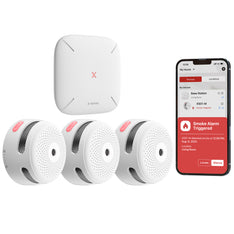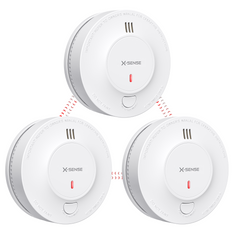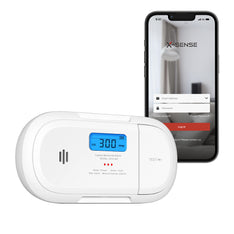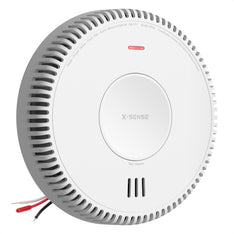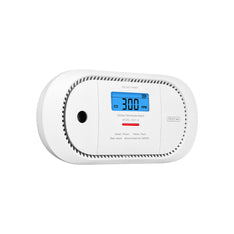Where Does Carbon Monoxide Come from and How to Detect It?
Wed, Apr 21, 2021
Carbon monoxide is a gas with which humans would not be able to breathe. However, when the amount of carbon monoxide exceeds the normal amount, it may lead to death. It is important to avoid any leakage of carbon monoxide. In this article, we are going to give you the answers to two questions: where does carbon monoxide come from and how do you detect it?
What Is Carbon Monoxide?
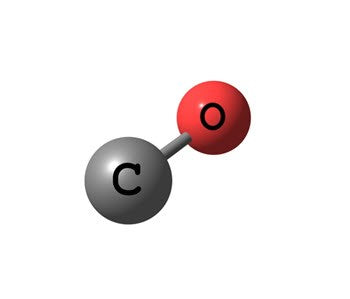
There are important things you should know in order to avoid having an excessive amount of carbon monoxide in your home. If you believe your house has a carbon monoxide leakage, it is important to find it. However, it is important that you answer the question: what is carbon monoxide? Before you can answer the question: where does carbon monoxide come from?
Carbon monoxide is a gas that helps us breathe. However, when there is too much carbon monoxide in the air, it can lead to poisoning. When the amount of carbon dioxide in the air surpasses the normal amount, your body will replace the oxygen found in your red blood cells with carbon monoxide.
Carbon monoxide is a gas that is tasteless, colorless, and odorless. It is produced by burning propane, wood, charcoal, or gasoline. Because it has no taste, color, or smell, our senses cannot detect it. If a big amount of carbon monoxide builds up in your house, you will probably not be able to know it unless you start to feel the effects. The effects of carbon monoxide may be similar to the symptoms of flu, which is why people are sometimes late to react. It is estimated that in the United States nearly 400 people die of carbon monoxide exposure every year.
What Is the Most Common Source of Carbon Monoxide?

There are many sources from where carbon monoxide may come from. So, where does carbon monoxide come from in a house?
The most common source of carbon monoxide are:
Chimneys and furnaces
Chimneys and furnaces are two of the most common sources of carbon monoxide in a house. This type of carbon monoxide happens when the debris is blocking a chimney or furnace.
Gas stoves
It is important that your gas stove is vented and installed outdoors. You must also clean the burners, oven, and range to the top often.
Back-drafting
Make sure that your appliances are vented well. Additionally, angle your horizontal pipes upwards. This will prevent any carbon monoxide leakage if your joints are not tightly fitted.
Vehicles
You should never run your car inside a garage even if the door is open. Additionally, to make sure that your car does not have any carbon monoxide leakage, bring your car in maintenance regularly.
Heaters
Heaters are some of the most common sources of carbon monoxide leakage. Make sure that you install your gas appliances properly, and make sure that they are well vented.
Where Does Carbon Monoxide Come from in Your Home?
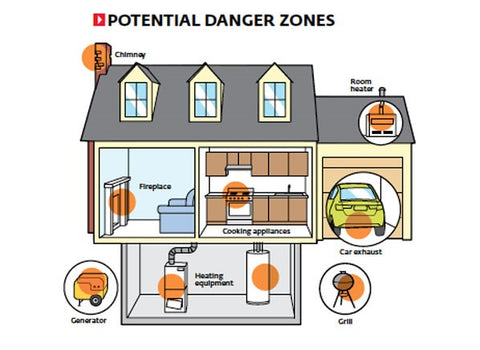
Carbon monoxide leakage in a home can be deadly. So, where does carbon monoxide come from in your home?
Whenever there is a burned material in your home, carbon monoxide is produced. As stated earlier, it is impossible for our senses to detect it. However, there are certain devices and appliances you could look out for. Some of those include:
- Oven or gas stoves
- Motor vehicles
- Tobacco smoke
- Clothing dryers
- Lawn equipment
- Grills
- Generators and power tools
- Fireplaces
- Boilers and furnaces
- Water heaters
- Wood stoves
Although your senses may not be able to detect the carbon monoxide, you will know where to look when asked the question: carbon monoxide, where does it come from?
What Are the Symptoms of Carbon Monoxide Poisoning?
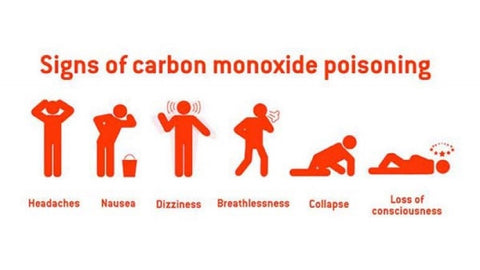
Now that you know where does carbon monoxide come from, you need to know the symptoms that come with carbon monoxide poisoning. The seriousness of your symptoms depends on the amount of time you have been exposed to carbon monoxide and the amount of carbon monoxide you have inhaled.
The most common symptoms of carbon monoxide poisoning are:
- Stomach pain
- Dizziness
- Tension-type headache
- Confusion and tiredness
- Difficulty breathing or shortness of breath
- Being or feeling sick
These symptoms are similar to those of flu or food poisoning.
These symptoms are the less severe ones. However, if your exposure to carbon monoxide is prolonged, you might experience these symptoms:
- Struggling to concentrate or think
- Regular emotion changes. You become easily depressed or angry, and you make irrational and impulsive decisions.
If, however, your exposure to carbon monoxide lasted for a long time, you may experience even more severe symptoms, such as:
- Vertigo. You may feel as if the world around you was spinning.
- Ataxia. This is caused by damage to the brain and nervous system. You will be uncoordinated.
- Muscle spasms or seizures. It will be caused by a strong burst of electrical activity in your brain.
- Tachycardia. You will have a heart rate of 100 or more beats per minute, and you will have difficulty breathing.
- Intoxication. Your mental state will be damaged.
- Chest pain. This may be caused by either angina or a heart attack.
- Loss of consciousness. When the levels of carbon monoxide are too high, this will lead to death.
Now that you know where does carbon monoxide come from in house and what the symptoms are, you need to learn the precautions you can take to protect yourself and your loved ones.
How to Protect Your Family from Co Poisoning?

There are certain things you can do to protect yourself and your family from carbon monoxide poisoning. Some of those things include:
Memorize the symptoms
One of the ways you can protect yourself is by remembering the symptoms. By doing so, even if someone has the same symptoms as that of flu, you will be able to know that there may be other possibilities.
Develop an emergency plan and run drills
You and your family must have a plan in case there is a carbon monoxide leakage. You should develop a plan to bring yourself and your loved ones to a secure place, and once in a while, you should practice the plan. This will ensure that you know the things to do during a carbon monoxide leakage.
Install a carbon monoxide detector
It is impossible for our senses to detect where does carbon monoxide come from, which is why it is so dangerous. However, because of that, people have developed devices that can alert us whenever there is a carbon monoxide leakage. One of the best carbon monoxide detectors available in the market is the X-Sense (CD07) 10-Year Battery Carbon Monoxide Detector with LCD. Some of its best features are:

- It has a 10-year sealed lithium battery.
- It meets the safety standards EN 50291 (EU) and UL 2034 (US).
- Its Figaro electrochemical CO sensor will help detect carbon monoxide threats.
- Its digital LCD will display the battery power and the CO concentration levels.
- It is easy to install.
This carbon monoxide detector particularly stands out because of its great efficiency. It can be hard to find a carbon monoxide detector that works this well in the market. It has saved numerous lives.
Conclusion
Carbon monoxide is a very dangerous gas. It is a silent killer. It is important to know where does carbon monoxide comes from and the symptoms that come with it. Thankfully, you were able to receive crucial information from this article.
